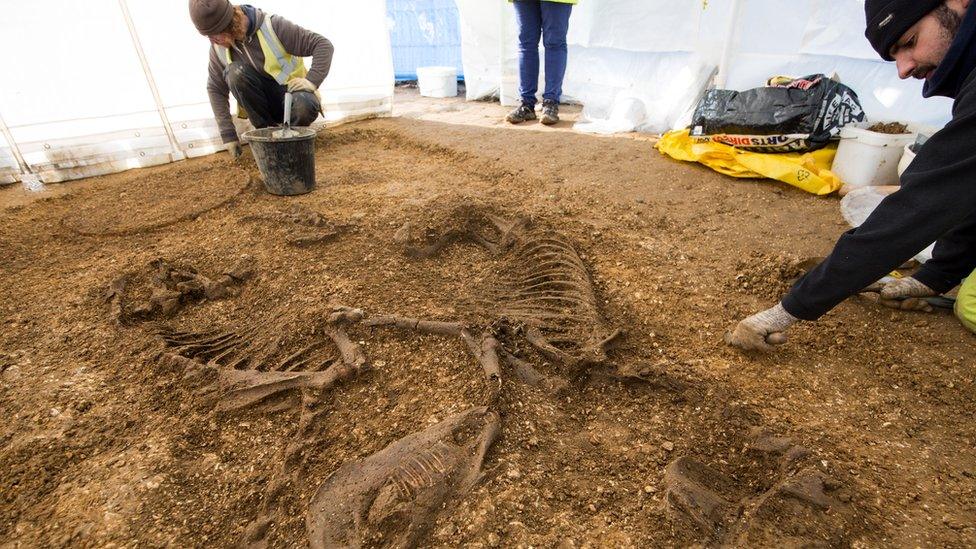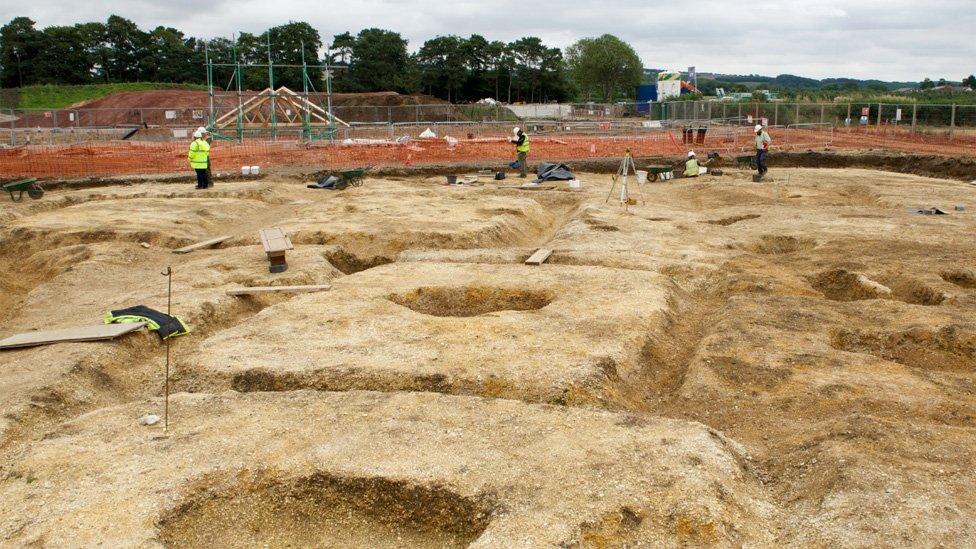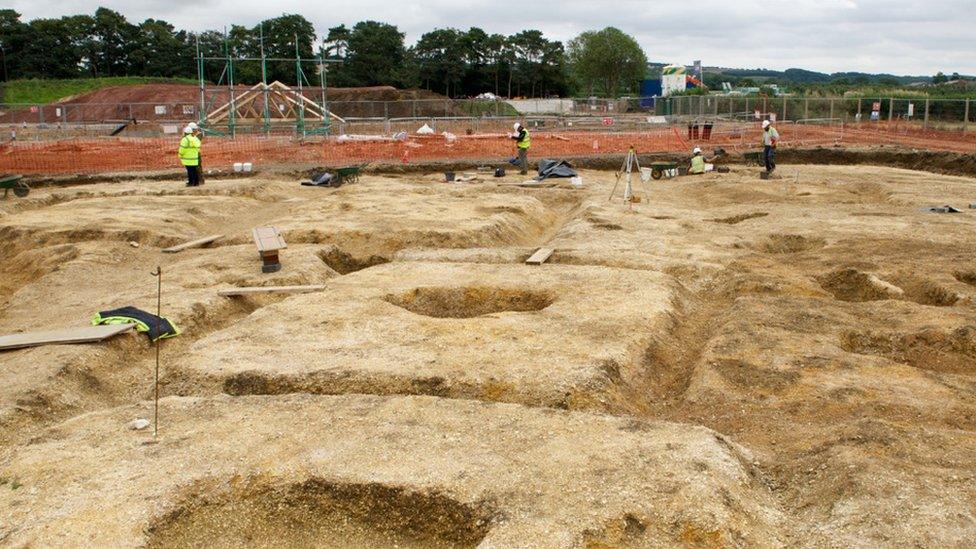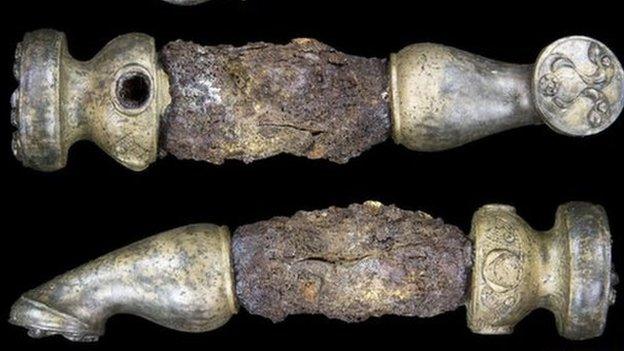Iron Age chariot and horses unearthed on Pocklington building site
- Published

Experts said the proximity of the horse skeletons to the chariot suggested the animals played a crucial role in the burial ceremony
Two horse skeletons and the remains of a chariot dating back to the Iron Age have been found on a housing development in East Yorkshire.
Archaeologists started working on the Pocklington site in 2014 and have excavated more than 75 burial graves, known as barrows.
They described the latest find as "highly unusual".
Other finds include human skeletons, including a "young warrior", swords, spears and shields.
Those working at the excavation site said current investigations were looking into how the chariot and horses might be linked to human burials.
They said further testing and analysis was expected to reveal more information.

More than 75 graves known as barrows have been unearthed
Paula Ware, from MAP Archaeological Practice, said the latest find could help shed more light on the ritual of Iron Age burial.
She said the proximity of the horse skeletons to the chariot suggested the animals played a crucial role in the burial ceremony.
Ms Ware added that the "rare discovery" would widen understanding of the Arras culture - a group of people who lived in the region at the time.

The Iron Age, Arras culture and burials

The period known as the Iron Age began in about 800 BC
The people of the period were farmers, growing wheat, barley and beans along with animals such as cattle, sheep and pigs
The Arras culture - which is uncommon outside East Yorkshire - is defined by its burial practices, which include burials in round and square enclosures, and chariots on the "richer graves".

- Published11 March 2017

- Published28 February 2017

- Published17 March 2016

- Published14 October 2014
